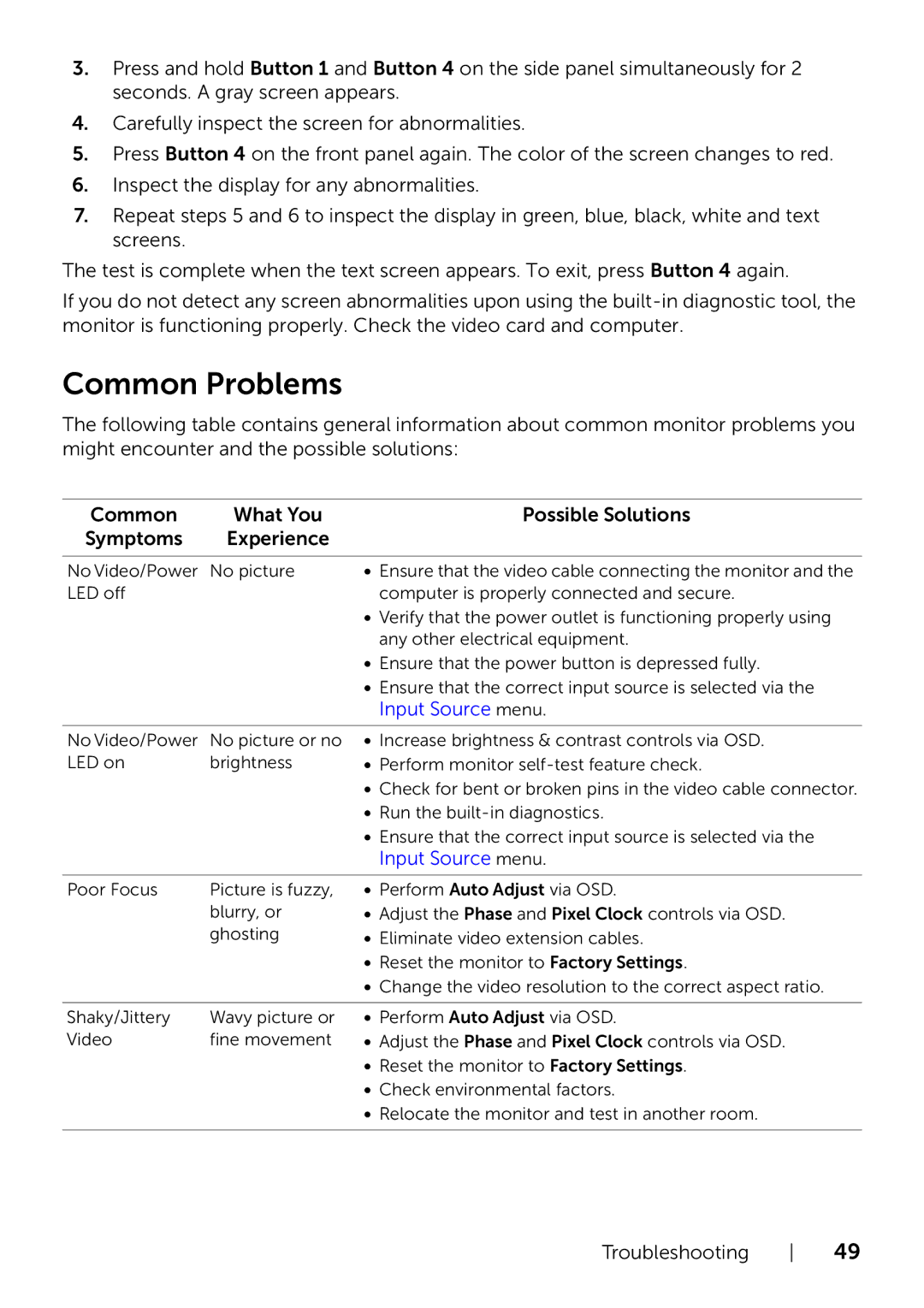
3.Press and hold Button 1 and Button 4 on the side panel simultaneously for 2 seconds. A gray screen appears.
4.Carefully inspect the screen for abnormalities.
5.Press Button 4 on the front panel again. The color of the screen changes to red.
6.Inspect the display for any abnormalities.
7.Repeat steps 5 and 6 to inspect the display in green, blue, black, white and text screens.
The test is complete when the text screen appears. To exit, press Button 4 again.
If you do not detect any screen abnormalities upon using the
Common Problems
The following table contains general information about common monitor problems you might encounter and the possible solutions:
Common | What You | Possible Solutions |
Symptoms | Experience |
|
|
|
|
No Video/Power | No picture | • Ensure that the video cable connecting the monitor and the |
LED off |
| computer is properly connected and secure. |
|
| • Verify that the power outlet is functioning properly using |
|
| any other electrical equipment. |
|
| • Ensure that the power button is depressed fully. |
|
| • Ensure that the correct input source is selected via the |
|
| Input Source menu. |
No Video/Power | No picture or no |
LED on | brightness |
•Increase brightness & contrast controls via OSD.
•Perform monitor
•Check for bent or broken pins in the video cable connector.
•Run the
•Ensure that the correct input source is selected via the
Input Source menu.
Poor Focus | Picture is fuzzy, |
| blurry, or |
| ghosting |
•Perform Auto Adjust via OSD.
•Adjust the Phase and Pixel Clock controls via OSD.
•Eliminate video extension cables.
•Reset the monitor to Factory Settings.
•Change the video resolution to the correct aspect ratio.
Shaky/Jittery | Wavy picture or |
Video | fine movement |
•Perform Auto Adjust via OSD.
•Adjust the Phase and Pixel Clock controls via OSD.
•Reset the monitor to Factory Settings.
•Check environmental factors.
•Relocate the monitor and test in another room.
Troubleshooting 49
